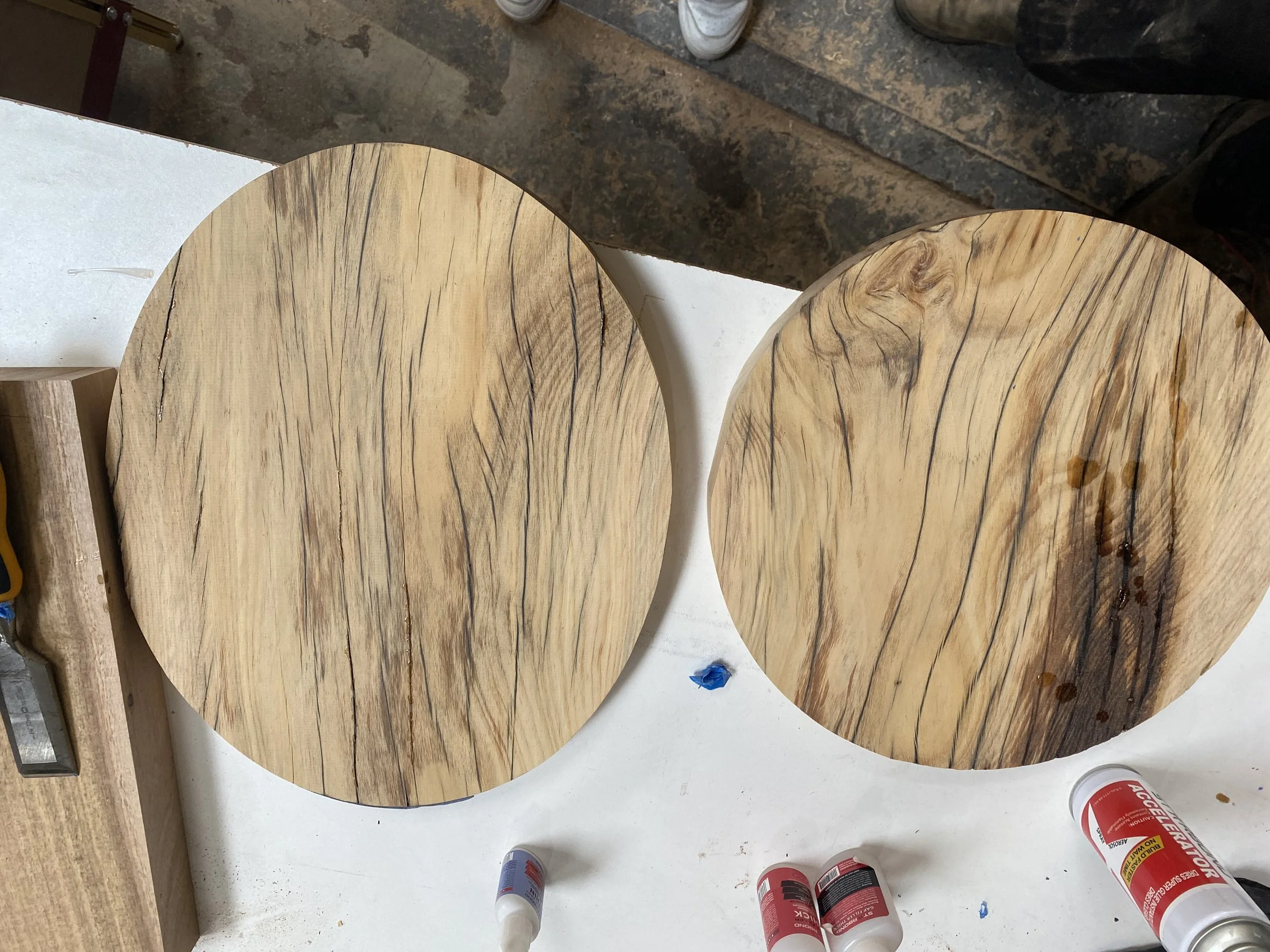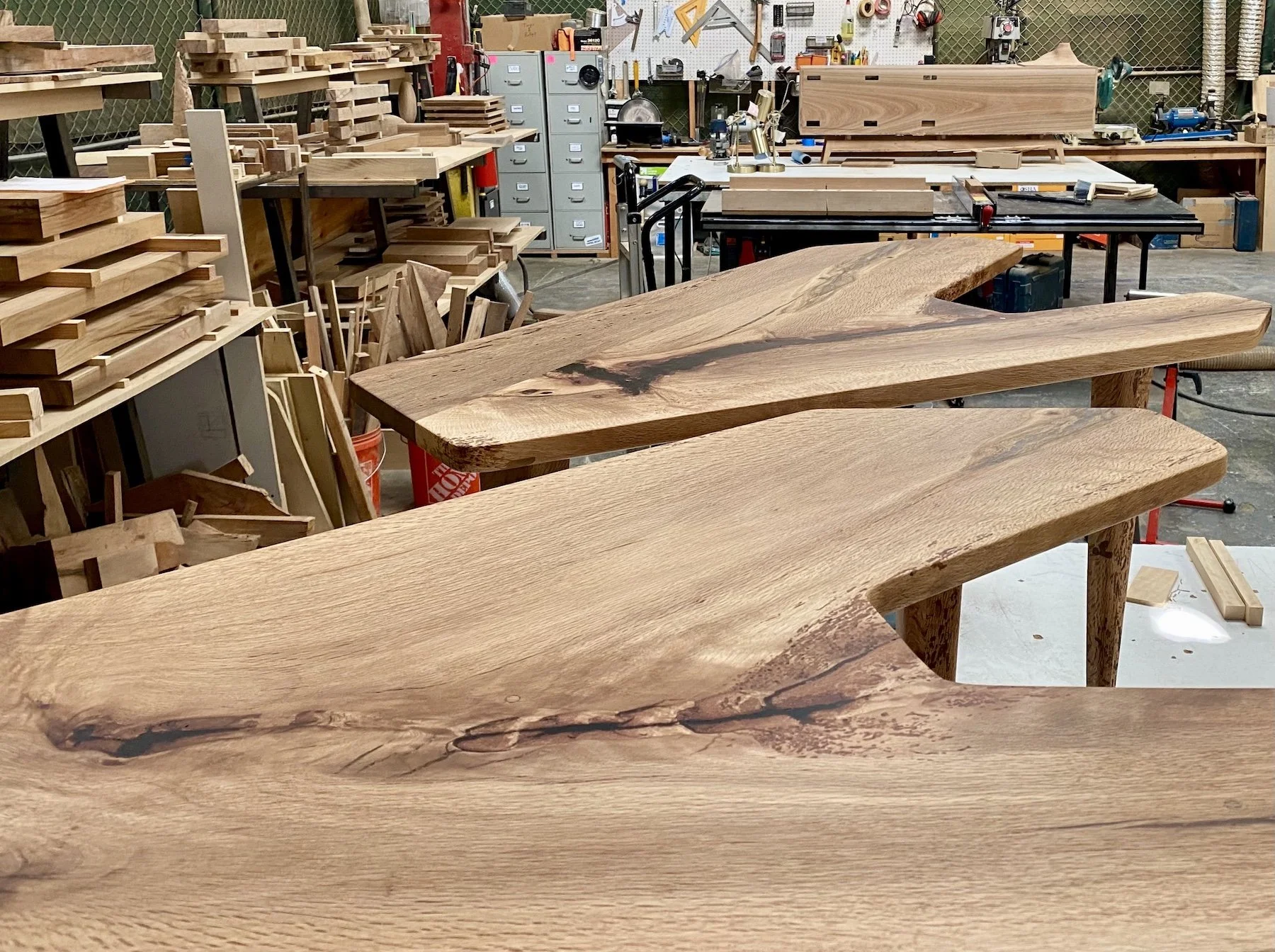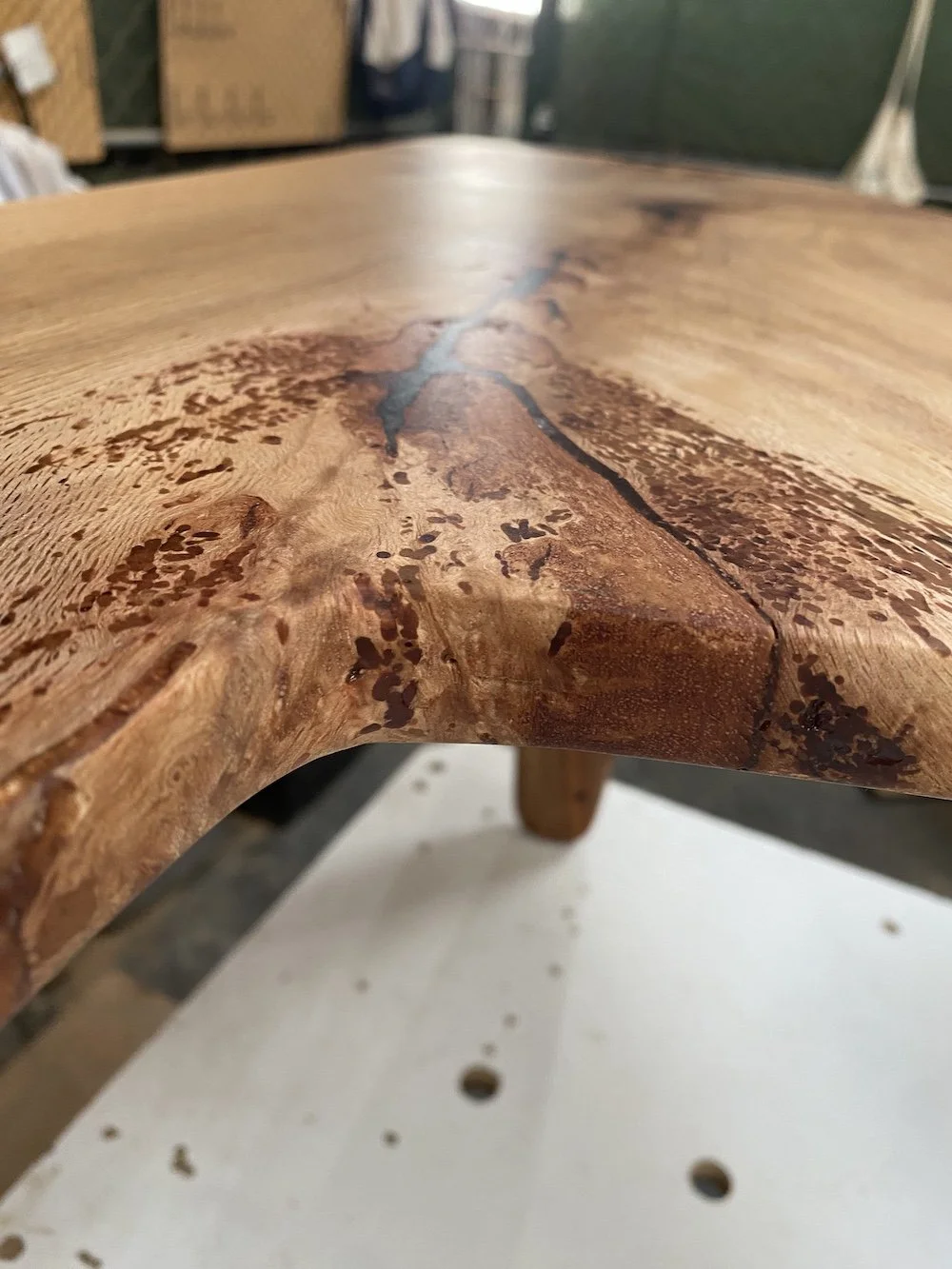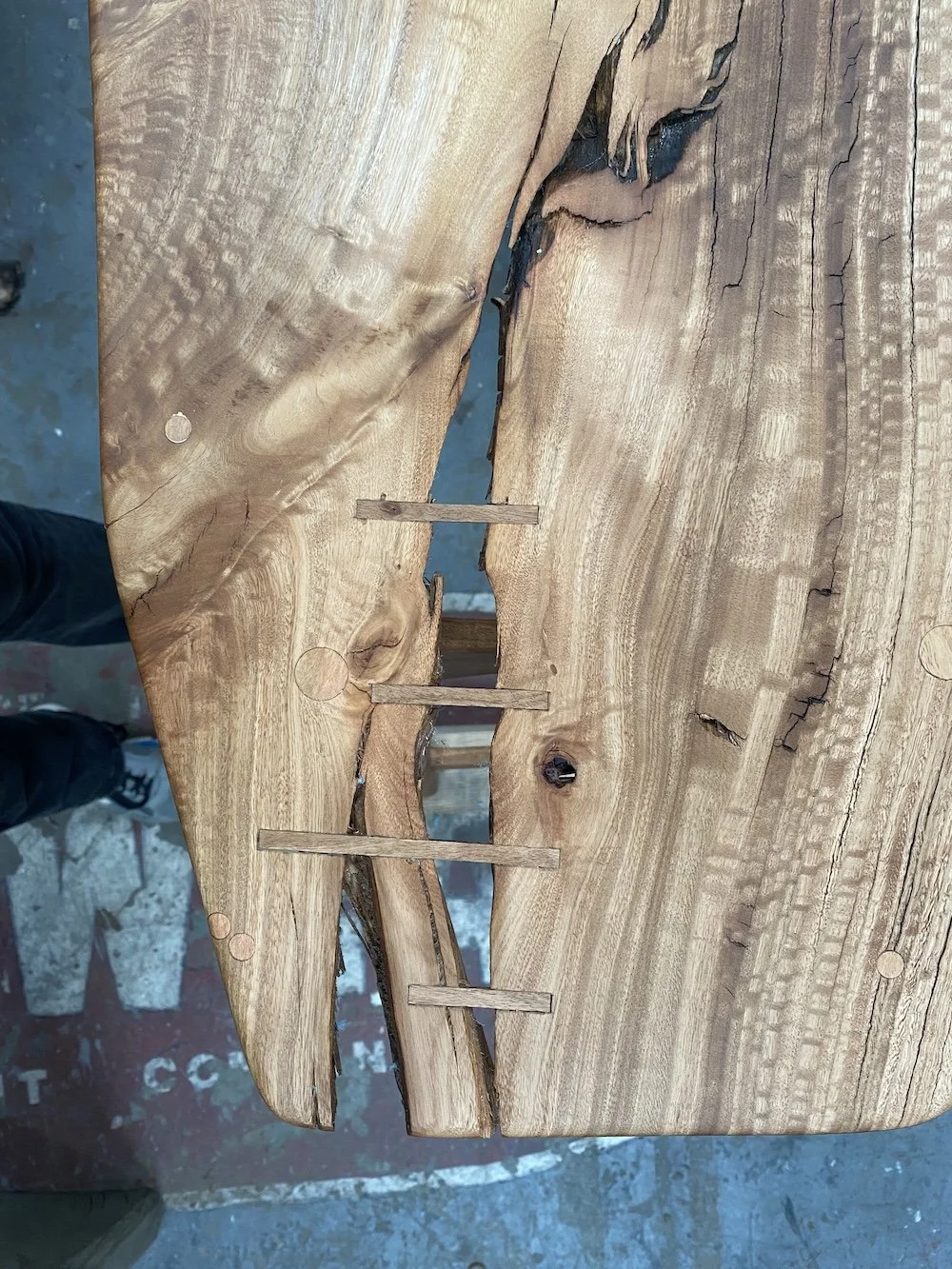There are many reasons that a tree may be removed from the urban landscape. Some fall in windstorms, some are removed for construction, and some are removed due to obstruction of roads and footpaths. The urban canopy of Los Angeles is home to many species of vegetation that endure harsh drought cycles, pruning, and compact soils. Among these species are the hardwoods that we use to make our furniture. The particular history of each tree is evident in its trunks and branches. Live Oak grows slowly, developing dense rings and ray flecks. Eucalyptus often displays vibrant swirls, checks, and knots born from rapid early growth and seasonal shock. These visual markers are archives of a tree’s nature and nurture- it’s life story. At Keita, we treat the tree as a design collaborator by responding to its growth patterns, letting its history and nature shape form and function.
Beyond being beautiful, urban trees play an essential role in climate regulation. In the City of Los Angeles, our 6 million urban trees store 1.3 million tons of carbon in their biomass. This is equivalent to ~4.7 million tons of CO₂. A recent USC Dornsife study found that L.A.’s trees offset up to 60% of daytime fossil fuel CO₂ emissions in summer and about 30% annually. When urban hardwoods such as the Live Oak, Eucalyptus, Black Locust, and Chinese Elm in our inventory are reclaimed and crafted into durable furnishings, that stored carbon remains locked in.
These efforts are a working arm of urban ecology, the study of how living organisms function in human-built environments. Renewable energy, water regulation, pollution filtration, and support for biodiversity all fall under this umbrella. Urban trees supply critical ecosystem services. They filter air pollutants, reduce heat islands, manage stormwater, and support biodiversity. Learn more about the avenues of urban ecology at UrbanEcologyProject.com.
At KEITA, we honor the full lifecycle of our materials, support local craftsmanship, and create exquisite items that showcase the lived history of our urban canopy. The result is heirloom-quality works that invite deeper connection between natural history and thoughtful design. Crafted with care and grounded in sustainable practice.








